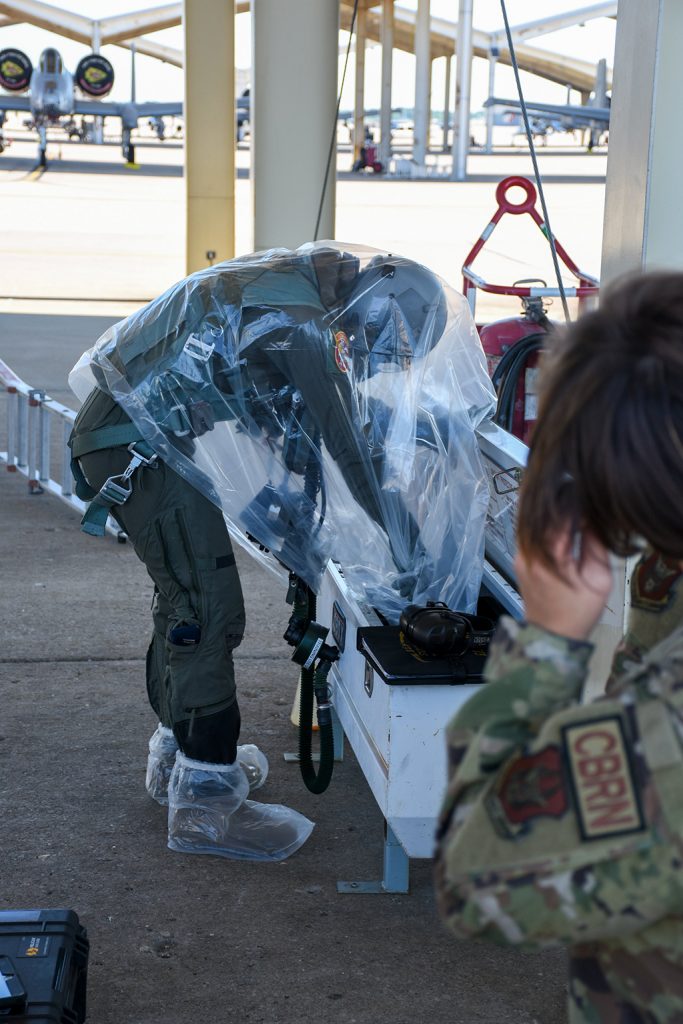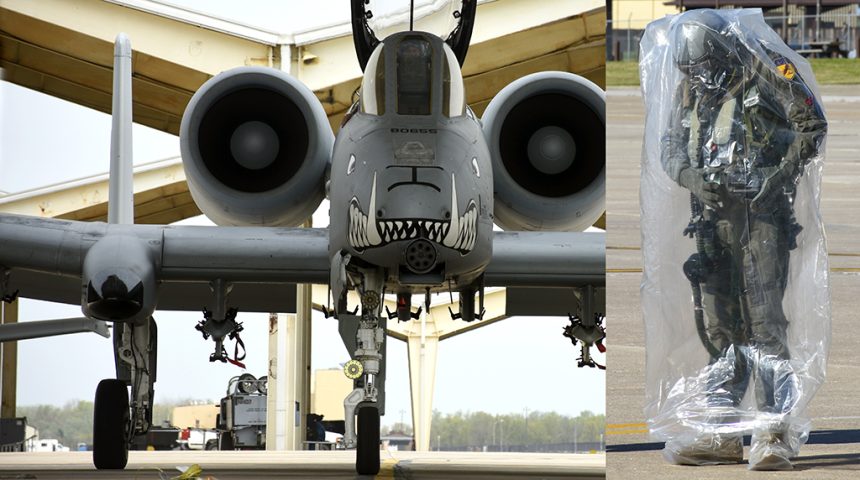An A-10 pilot has recently carried out training with protective gear: here are some photos showing the somehow curious boarding procedure.
Simulated-contaminated airfield operations were carried out at Whiteman Air Force Base, Missouri, recently.
Capt. Curtis Lackey, an A-10 pilot with the 358th Fighter Squadron boarded his Thunderbolt II aircraft wearing protective gear and the images the U.S. Air Force has released provide some interesting details about the somehow curious procedure the Warthog pilot had to follow to board the jet.
In particular, the shots show Lackey on the flight line, in a plastic over drape. Under the drape, the pilot wears a chemical- and biological-resistant flight suit and the AERPS (Aircrew Eye Respiratory Protection System) mask, used to provide the pilot with breathable air and mask defogging in a contaminated environment.

Before boarding the jet, the pilot removes his plastic over drape and overboots to avoid contaminating the jet.

Special flight gear, including masks and gloves, protect the head, eyes, and respiratory system of the user from chemically, biologically, and radiologically toxic environments, allowing aircrews to safely operate in virtually any hazardous environment. While the odds of protective gear being required are fairly low, U.S. aircrews regularly train to operate in contaminated airfields.

Indeed, all the aircrews, including pilots, WSOs (Weapon System Operations) and loadmasters train with AERPS equipment, consisting of a rubber mask, multiple layers of boots and gloves, fan filter system and an audio and speaker system.
Exercises are important to assess the ability of the aircrews to safely execute missions using pieces of equipment that may limit their ability to breathe, move and communicate. Depending on the simulated scenario, the ability to don and doff masks or gloves before or after take-off, or approaching the battlefield, may also put to test.









